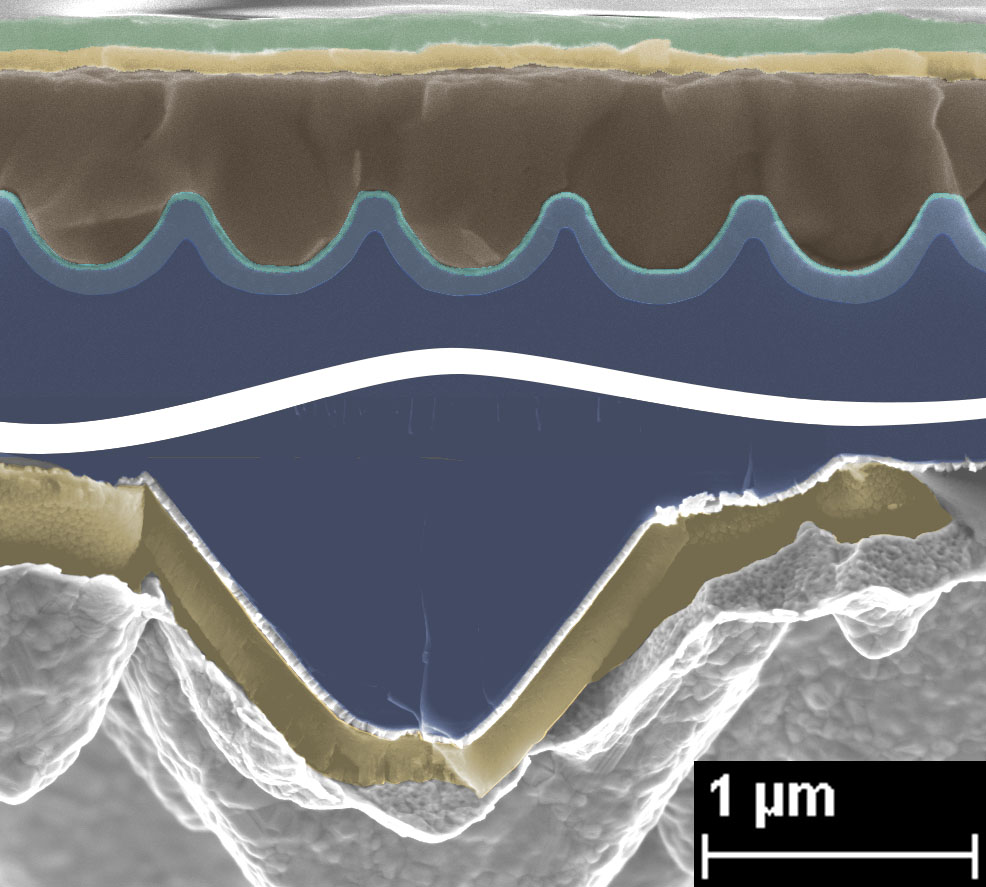| Oct 24, 2022 |
Tandem solar cells with perovskite: nanostructures help in many ways
(Nanowerk News) Tandem solar cells made of perovskite and silicon enable significantly higher efficiencies than silicon solar cells alone. Tandem cells from HZB have already achieved several world records.
|
|
Most recently, in November 2021, HZB research teams achieved a certified efficiency of 29.8 % with a tandem cell made of perovskite and silicon. This was an absolute world record that stood unbeaten at the top for eight months. It was not until the summer of 2022 that a Swiss team at EPFL succeeded in surpassing this value.
|
|
Three HZB teams had worked closely together for the record-breaking tandem cell. Now they present the details in Nature Nanotechnology ("Nano-optical designs for high efficiency monolithic perovskite-silicon tandem solar cells").
|
 |
| Scanning electron microscopy of perovskite silicon tandem cells in cross-section: a) planar, b) with corrugated nanotexture, c) with nanotexture and back-reflector layer (golden). (Image: P. Tockhorn, HZB)
|
Textures improves the performance
|
|
"Our competences complement each other very well," says Prof. Dr. Christiane Becker, who developed the world record cell with the team led by Dr. Bernd Stannowski (silicon bottom cell) and Prof. Dr. Steve Albrecht (perovskite top cell).
|
|
Becker's team introduced a nanooptical structure into the tandem cell: a gently corrugated nanotexture on the silicon surface.
|
|
"Most surprising, this texture brings several advantages at once: it reduces reflection losses and ensures a more regular perovskite film formation," says Becker.
|
|
In addition, a dielectric buffer layer on the back of the silicon reduces parasitic absorption at near-infrared wavelengths.
|
|
As a conclusion, the researchers hold: customised nanotextures can help to improve perowskite semiconductor materials on diverse levels. These results are not only valuable for tandem solar cells made of perovskite and silicon, but also for perovskite-based light-emitting diodes.
|

